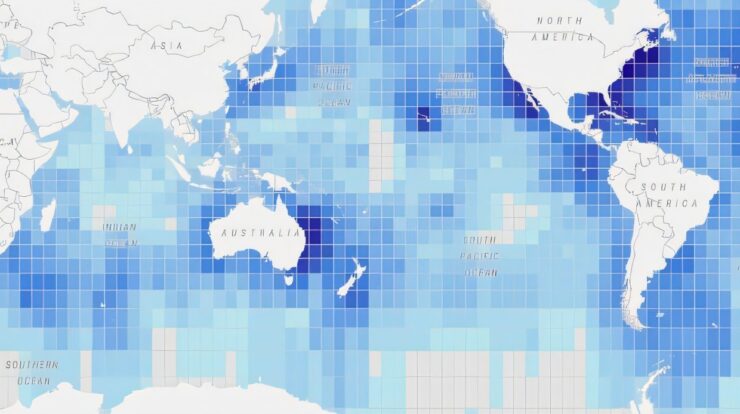
Researchers have introduced an engaging worldwide map aimed at illustrating the migration routes of over 100 oceanic species in order to safeguard vulnerable animals.
The University of Queensland and Duke University researchers have created new models intended to be included as part of the
Ocean Migratory Connectivity (MiCO)
A database designed to fill knowledge gaps for policymakers and conservationists.
Dr. Lily Bentley from UQ’s Center for Biodiversity and Conservation Science stated that the online tool provides the first freely available global perspective on marine migratory connectivity.
The
research
is published in
Nature Communications
.
“Covering 109 species including birds, mammals, turtles, and fish, MiCO brings together thousands of records from over 1,300 sources to map how marine animals traverse the world’s oceans,” Dr. Bentley said.
The instrument links roughly 2,000 vital ecosystems and highlights the significance of collaborative efforts across boundaries.
“MiCO enables scientists, governments, and international organizations to understand how migratory marine species link regions and jurisdictions.”
Research revealed that numerous animals traverse national waters and international open oceans throughout their lifecycles, subjecting them to multiple dangers spanning different nations.
Dr. Bentley stated that the models underscore key regions and linkages that go beyond political borders, indicating that no single nation can adequately safeguard migratory species alone.
She stated that for effective protection of these species, countries need to collaborate.
The center’s director, Associate Professor Daniel Dunn, highlighted that the complex interconnections within this system emphasize the necessity of internationally coordinated conservation initiatives like the recently adopted High Seas Treaty, aimed at protecting marine life outside territorial waters.
Dr. Dunn mentioned that MiCO’s readily accessible models have already been recognized as a significant resource to guide the execution of this treaty, aiding policymakers in grasping how their nations and the biodiversity under their care connect with the open oceans.
The system is aligned with the Convention on Migratory Species’ objective of creating a comprehensive global atlas of wildlife migration, an initiative where MiCO aims to play a significant role.
According to researchers, over sixty percent of marine migratory creatures have yet to be evaluated, and plans for expanding MiCO are underway.
Dr. Dunn stated that their aim is to create the most extensive worldwide benchmark of marine migratory species’ connectivity available, ensuring that conservation efforts are grounded in solid data.
More information:
Lily Bentley and others highlight that marine megafauna migrations link different parts of the global ocean.
Nature Communications
(2025).
DOI: 10.1038/s41467-025-59271-7
Furnished by the University of Queensland
This tale was initially released on
Dailyexe
. Subscribe to our
newsletter
For the most recent science and technology news updates.






